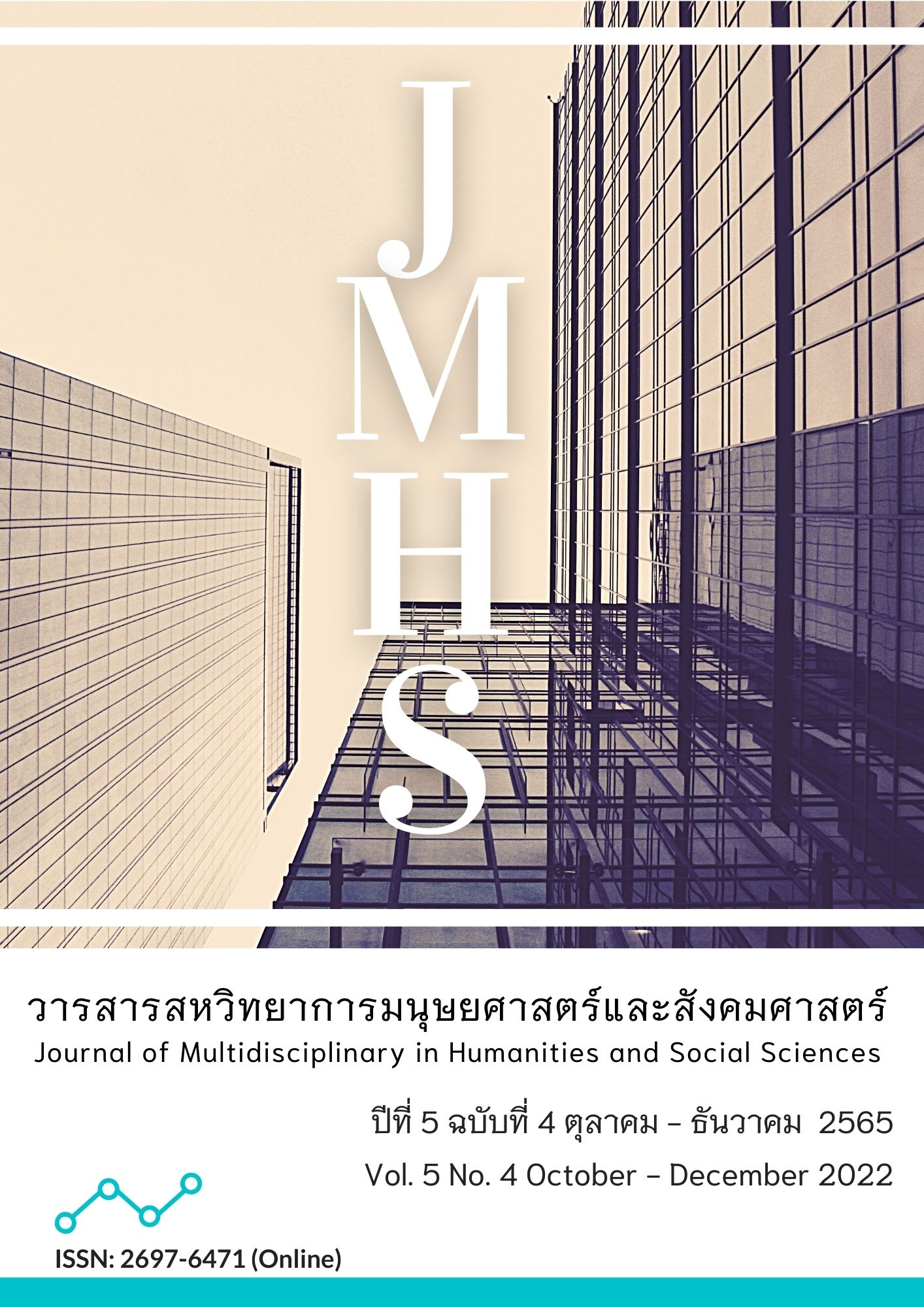การศึกษาจิตรกรรมพุทธศิลป์ในฐานะสื่อความหมายของอนุสสติ 6
Main Article Content
บทคัดย่อ
จิตรกรรมพุทธศิลป์ คือผลงานการเขียนภาพลงบนพื้นผิววัสดุรองรับ เพื่อให้เกิดเป็นเรื่องราวและความงดงามตามความนึกคิดเกี่ยวกับพระพุทธศาสนา มีลักษณะ 2 มิติ คือความกว้างและความยาว ตามหลักพระพุทธศาสนานั้นมุ่งสอนให้บุคคลเว้นความชั่ว ทำแต่ความดี และทำจิตใจให้ผ่องใส มีความมักน้อยสันโดษ และประพฤติขัดเกลากิเลส เมื่อจิตรกรรมเป็นงานทัศนศิลป์ จึงควรเป็นสื่อให้ระลึกถึงพระรัตนตรัยและความดีที่ตนบำเพ็ญมา ตลอดจนมองเห็นคุณธรรมที่ทำให้บุคคลเป็นเทวดา ก็วัตถุเป็นที่ตั้งแห่งความระลึกถึงเรียกว่าอนุสสติ 6 ประกอบด้วยพุทธานุสสติ ธัมมานุสสติ สังฆานุสสติ สีลานุสสติ จาคานุสสติ เทวดานุสสติ อันเป็นเหตุที่ตั้งแห่งความเลื่อมใส ศรัทธา เกิดปีติปราโมทย์ น้อมนำหลักธรรมมาปฏิบัติเพื่อขัดเกลากิเลส และบรรลุอริยธรรมอันสูงส่งโดยลำดับ ซึ่งจิตรกรรมพุทธศิลป์ที่สร้างสรรค์ให้สอดคล้องกับอนุสสติ 6 จะเกิดประโยชน์สูงสุดทั้งแก่ชาติ พระศาสนา และประชาชนโดยส่วนรวม
Article Details

อนุญาตภายใต้เงื่อนไข Creative Commons Attribution-NonCommercial-NoDerivatives 4.0 International License.
ทัศนะและความคิดเห็นที่ปรากฏในวารสาร ถือเป็นความรับผิดชอบของผู้เขียนบทความนั้น และไม่ถือเป็นทัศนะและความรับผิดชอบของกองบรรณาธิการ
เอกสารอ้างอิง
ธานี สุวรรณประทีป. (2565). คัมภีร์อุปาสกชนาลังการ: การปริวรรต การแปล และวิเคราะห์. วารสาร มจร บาฬีศึกษาพุทธโฆสปริทรรศน์, 8(1), 32-42.
พระครูภาวนาโสภิต และบุญญาดา ประภัทรสิริ. (2564). โยนิโสมนสิการ : วิถีแห่งปัญญาเพื่อการพัฒนาจิตต้านโควิด-19, วารสารธรรมวัตร, 2(2), 9-17.
พระชลญาณมุนี ธมฺมโภชฺโช. (2565). ปรากฏการณ์ทางความเชื่อของคนไทยในยุคปัจจุบัน. วารสาร มจร บาฬีศึกษาพุทธโฆสปริทรรศน์, 8(1), 179-198.
พระพุทธโฆสาจารย์. (2554). คัมภีร์วิสุทธิมรรค. (พิมพ์ครั้งที่ 10). สมเด็จพระพุฒาจารย์ (อาจ อาสภมหาเถระ) แปลและเรียบเรียง. กรุงเทพฯ: ธนาเพรส.
พระมหากิตติณัฏฐ์ สุกิตฺติเมธี. (2564). การวิเคราะห์แนวทางงดเว้นจากความเสื่อมในปราภวสูตร. วารสารสหวิทยาการมนุษยศาสตร์และสังคมศาสตร์, 4(1), 84-95.
พระมหาสมปอง มุทิโต. (2547). คัมภีร์อภิธานวรรณนา. (พิมพ์ครั้งที่ 2). กรุงเทพฯ: ชมรมนิรุตติศึกษาวัดมหาธาตุยุวราชรังสฤษฎิ์.
พระสมชาย บัวแก้ว, พระมหาบุญศรี วงค์แก้ว และ สุเชาวน์ พลอยชุม. (2564). อภิสมาจารกระบวนการพัฒนาบุคลิกภาพตามแนวพระพุทธศาสนา. วารสารศิลปการจัดการ, 5(3), 895-907.
มหาจุฬาลงกรณราชวิทยาลัย. (2539). พระไตรปิฎกภาษาไทย ฉบับมหาจุฬาลงกรณราชวิทยาลัย. กรุงเทพฯ: โรงพิมพ์มหาจุฬาลงกรณราชวิทยาลัย.
ราชบัณฑิตยสถาน. (2555). พจนานุกรมศัพท์ศึกษาศาสตร์. กรุงเทพฯ: อรุณการพิมพ์.
สมเด็จพระพุทธโฆษาจารย์ (ป.อ. ปยุตฺโต). (2559). พจนานุกรมพุทธศาสตร์ ฉบับประมวลธรรม. (พิมพ์ครั้งที่ 29). กรุงเทพฯ: สหธรรมิก.
เหม เวชกร. (2558). ภาพวิจิตรชุดปฐมสมโพธิ พระมาลัย พาหุง พระเวสสันดร. กรุงเทพฯ: โคเวอร์ครีเอทีฟ.
Tan, C. C., & Damnoen, P. S. (2020). Buddhist Noble Eightfold Path Approach in the Study of Consumer and Organizational Behaviors. Journal of MCU Peace Studies, 8(1), 1–20.


